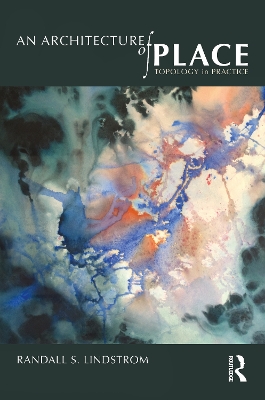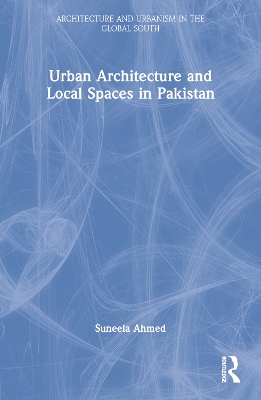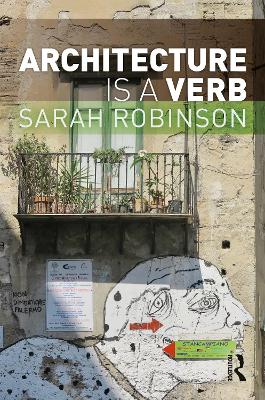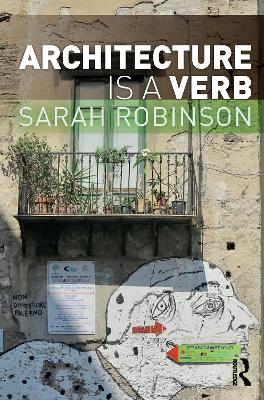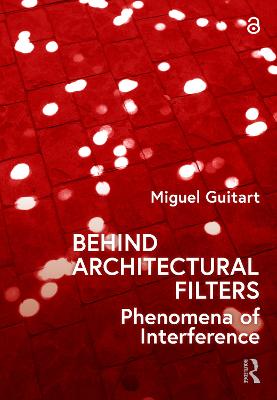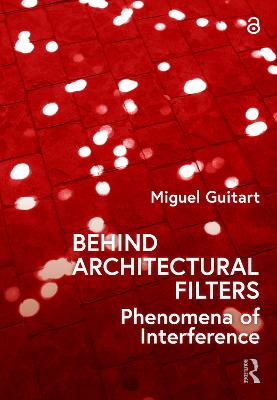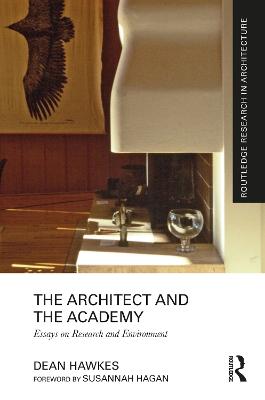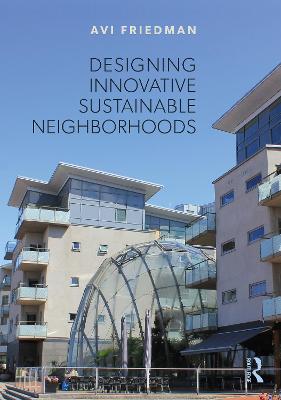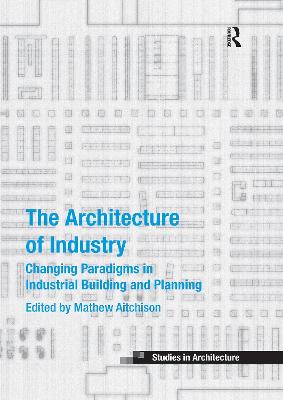Routledge Companion to Ecological Design Thinking
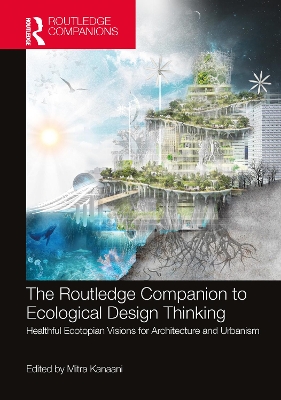 portes grátis
portes grátis
Routledge Companion to Ecological Design Thinking
Healthful Ecotopian Visions for Architecture and Urbanism
Kanaani, Mitra
Taylor & Francis Ltd
05/2024
648
Mole
9781032023908
Pré-lançamento - envio 15 a 20 dias após a sua edição
Introduction by Gisela Loehlein
Foreword by Keith Pezzoli
Prologue by Saskia Sassen
Ecological Perspective Domain One: Design Manifestos and Theories in Ecological Domains - Symbiotic Trajectories Between Ecological Organisms and Creative Design Thinking: Critical Design Idealisms on Ecotopian Design Trajectories in Bio-Socio-Techno Integrative Processes
1.1 Designs for a Rapidly Transforming Human Culture
Thomas Fisher
1.2 Design with Nature Reconsidered: Then, Now, and Later
George Dodds and Christina Leigh Geros
1.3 Ecological Prototypes for Green Construction: Linking Architecture and Ecological Engineering for Integrated Urban, Agricultural, and Ecological Land Use
Defne Sunguroglu Hensel
1.4 From Evo-Devo Strategies to a Way Forward with Eco-social Evo-Devo for Generative Design Processes: Toward Extending the Polymorphism of Metabolic Architecture and the Integration of Diversities
Sean Ahlquist
1.5 Digitalism in Morphogenetic Practices for Human Centric Design Thinking - Towards an Eco Animated Performative Gestalt Through Parametricism
Robert R. Neumayr
1.6 Systems of Systems: Architectural Atmosphere, Neuromorphic Architecture, and the Well-Being of Humans and Ecospheres
Michael Arbib, Meredith Banasiak and Luis Othon Villegas Solis
1.7 Architecture Design in the Age of Artificial Intelligence: The Latent Ontology of Architectural Features
Matias del Campo and Sandra Manninger
1.8 Spatial Entities of the Future: Design Through the Lens of Neuroscience
Kate Jeffery and Fiona Zisch
Ecological Perspective Domain Two: Anthropocentric Transformative Design Concepts - Anthropocentric Non-Utilitarian Economics of Wellbeing and Resilience: Habitat, Community, Human Settlements, Movement, Transportation, and Diaspora, as Socio-Organisms for Livability
2.1 Ecological Urbanism for Health, Well-being, and Inclusivity: Engaging- Culture, Consciousness, and Nature
Frederick Steiner
2.2 Dimensions of Urban Infill for Cities in the Global South: The Case of Rio de Janeiro, Brazil.
Denise de Alcantara and Vicente del Rio
2.3 Design of the Future Neighborhood - Neighborhoods Back to the Future - In Resolving the Housing Crisis and Affordability
Frank Wolden, Michael Stepner and Mary Lydon
2.4 Urban Heat Mitigation: Current and Future Trends
Poorang Piroozfar and Eric Farr
2.5 Sustainability Within a Market-Based Ecological Order
Patrik Schumacher
2.6 Future of Urban Design Through Generative Design Tools: New Data Sources and Analysis Practices in Urban Mobility and Environmental Studies
Gustavo Romanillos and Maider LLaguno-Munitxa
2.7 Green Urban Futures: Regreening Cities to Enhance Health, Resilience, and the Urban Microclimate
Steffen Lehmann
2.8. Urban Design in Search for Equilibrium: The Evolving Urban Metabolism of Sustainable Cities - Towards an Ethical and Sustainable Approach to City Building
Howard M. Blackson III
Ecological Perspective Domain Three: The Design Connectivity Domain - Design Hybridity and Performativity in Non-Utilitarian/Utilitarianist Approaches and Views Toward Eco-Centric Environmental Behavior Transactions: Materiality, Biodiversity, Biomimetics, Energy Resiliency, and the Role of Technology
3.1 Design Resiliency, Curbing Climate Change and Temporal Trajectories for the Anthropocene
Meredith Sattler
3.2 Biomorphic Intelligence: Deploying Biotechnology in Architecture for Human Health and Wellbeing
Claudia Pasquero and Marco Poletto
3.3 Material Ecology 1 -- Four Ecologies of Engineered Living Materials Research
Martyn Dade-Robertson and Meng Zhang
3.4 Material Ecology 2 -- Optimization of Daylighting Performance and Solar Heat Gain Through Adaptive Kinetic Envelopes
Moon Young Jeong, Maria Matheou, and L. Blandini
3.5 Environment-Aware Behavioral Envelopes: Design Ecologies, Adaptive Geometries, and Technologies for Climate Interaction
Kathy Velikov and Geoffery Thuen
3.6 Material Ecology 3 - Smart Materials
Essay One: Smart Materials for Thermo-Responsive Architectural ApplicationsYomna El-Ghazi, Neveen Hamza, and Martyn Dade-Robertson
3.6 Material Ecology 3 - Smart Materials
Essay Two: Towards Passively Responsive Biomimetic ArchitectureArtem Holstov, Ben Bridgens and Graham Farmer
3.6 Material Ecology 3 - Smart Materials
Essay Three: Macro Affects from Nano Assemblies in Bacteria-Based Hygromophs
Emily Birch, Martyn Dade-Robertson, Ben Bridgens, and Meng Zhang
3.7 Visionary Engineered Biotopes in Bringing Nature to High Levels: Towards Bioclimatic Skyscrapers - Achieving High-Comfort Low-Energy Sustainable Tall Buildings in Different Climate Zones
Brian Cody
3.8 Robots in the Room, Robots Are the Room: The Future of Robotics, Architectural Design, and Domestic Routine
Keith Evan Green
3.9. Sublimating Tectonics of Architecture: Innovations in Creative Structural Engineering
Christiane Margareta Herr
3.10 Enabling Circular Economy in the AEC industry through Digitalization
Eric FARR and Poorang Piroozfar
3.11 Ecotopian Visions for the Purification and Healing of Ailing Ecologies Impacted by the Anthropocene
Melanie P. Hahn and Mitra Kanaani
3.12 Architectural Computing and Design Optimization for Healthful Ecotopian Built environments?
Yana Boeva, Thomas Wortmann, Cordula Kropp, and Achim Menges
3.13 Holocene to Anthropocene, Architectural Practice, Biomimetics in the Built Environment-Innovation in Architectural Firms Practices
Andrew Whalley
Ecological Perspective Domain Four: The Climatic Design Domain - Methodologists' Epistemological Views of Ecological Design: Ecosystem Climatic Organisms and Actions; Utilizing Elements of Water, Air/Space, and Soil/Land as Concepts, Opportunities, and Challenges for Design Thinking
4.1 Innovative Design Solutions for Climatic Challenges of Sea Level Rise -- Flooding & Ocean City Designs: Salty Urbanism: Towards an Adaptive Coastal Design Framework to Address Climate Change and Sea Level Rise
Jeffrey Huber
4.2 Amphibious Buoyant Architecture - Designs for Living with Water: Floating Futures
Lukasz Piatek
4.3 Design for Wildfire: Architecture as Catalyst for Virtuous not Vicious Wildfire Activity
Melissa Sterry
4.4 Architecture that Bridges and Merges the Human-Made with Nature
Essay One: Towards a Biometeorological Design - Architectures of the Planetary Invironment
Klaus K Loenhart
4.4 Architecture that Bridges and Merges the Human-Made with Nature
Essay Two: Groundscapes: The Merger of Architecture and Ecology
Frederick Besancon
4.5 Embedded Architectures: Charting its Traits of En Route to Architecture and Environment Integration
Michael U. Hensel
4.6 Climate-Friendly Green Infrastructure Planning and Design: The Promises, Vulnerabilities, and Remediation Design Practices for Environmental Contaminants
Oliver Tiliouine and Keith Pezzoli
4.7 Design for Air in the Urban Micro-Environments--How's the Air on Your Block? The Outdoor Environmental Inequality in Cities
Maider LLaguno-Munitxa
4.8 The Future of Architecture on Earth & in Space: Lessons & Synergies
Essay One: The Evolution of Space Architecture & Its Potential to Inspire New Paradigms for Inhabiting Earth Elizabeth Song Lockard
4.8 The Future of Architecture on Earth & in Space: Lessons & Synergies
Essay Two: A Space Architecture Primer for 21st-Century Civil Architects and Future City Evolution
Madhu Thangavelu
Ecological Perspective Domain Five: The Social Design Domain - The Domain of Social Ecology in Using Design Tools: Equity, Diversity, Embodiment, Sustenance, Health, and Human Resiliency in Design Practices as Design Concepts
5.1 Healthful Spatial Entities: The New Meaning of Healthful Measures for Building Occupants: Designers, Design, and Infection Control
Dak Kopec and AnnaMarie Bliss
5.2 Social Performativity in Transformative Building Typologies: Architecture's Contribution to the Societal Well-Being
Angela Brooks
5.3 Socio-Material Capacities for Ecotopian Designs: Placing Architecture at the Nexus of Materiality, Neurodiversity, and Social Behavior--Shifting Design Agency to Activate Neuro-diversity
Sean Ahlquist
5.4 Active Assisted Living Technology in the Context of the Built Environment
Thomas Linner, Marc Schmailzl, Thomas Bock, Rongbo Hu, and Joerg Guttler
5.5 Architectural Practice Exploring Scientific Eco-Centric Approaches for Healthful Anthropomorphic Environments -- Innovation in Architectural Practice and Research: A Design Research Philosophy of Practice Informing Sustainability, Health, and Well-Being
Gensler Research - Steven Shinn
5.6 Therapeutic Spaces for Healthy Aging: Integrating Biophilic Design for Human and Environmental Wellbeing
Terri Peters and Ashita Parekh
5.7 Biotic Jurisdictions: Transboundary Ecologies in the U.S.-Mexico Borderland
Stephen Mueller and Ersela Kripa
5.8 Ecologically Performative Design Principles for Achieving Just Cities
Theodore C. Landsmark
Epilogue: Architects, Artilects and Climate Change
Jim Dator
Introduction by Gisela Loehlein
Foreword by Keith Pezzoli
Prologue by Saskia Sassen
Ecological Perspective Domain One: Design Manifestos and Theories in Ecological Domains - Symbiotic Trajectories Between Ecological Organisms and Creative Design Thinking: Critical Design Idealisms on Ecotopian Design Trajectories in Bio-Socio-Techno Integrative Processes
1.1 Designs for a Rapidly Transforming Human Culture
Thomas Fisher
1.2 Design with Nature Reconsidered: Then, Now, and Later
George Dodds and Christina Leigh Geros
1.3 Ecological Prototypes for Green Construction: Linking Architecture and Ecological Engineering for Integrated Urban, Agricultural, and Ecological Land Use
Defne Sunguroglu Hensel
1.4 From Evo-Devo Strategies to a Way Forward with Eco-social Evo-Devo for Generative Design Processes: Toward Extending the Polymorphism of Metabolic Architecture and the Integration of Diversities
Sean Ahlquist
1.5 Digitalism in Morphogenetic Practices for Human Centric Design Thinking - Towards an Eco Animated Performative Gestalt Through Parametricism
Robert R. Neumayr
1.6 Systems of Systems: Architectural Atmosphere, Neuromorphic Architecture, and the Well-Being of Humans and Ecospheres
Michael Arbib, Meredith Banasiak and Luis Othon Villegas Solis
1.7 Architecture Design in the Age of Artificial Intelligence: The Latent Ontology of Architectural Features
Matias del Campo and Sandra Manninger
1.8 Spatial Entities of the Future: Design Through the Lens of Neuroscience
Kate Jeffery and Fiona Zisch
Ecological Perspective Domain Two: Anthropocentric Transformative Design Concepts - Anthropocentric Non-Utilitarian Economics of Wellbeing and Resilience: Habitat, Community, Human Settlements, Movement, Transportation, and Diaspora, as Socio-Organisms for Livability
2.1 Ecological Urbanism for Health, Well-being, and Inclusivity: Engaging- Culture, Consciousness, and Nature
Frederick Steiner
2.2 Dimensions of Urban Infill for Cities in the Global South: The Case of Rio de Janeiro, Brazil.
Denise de Alcantara and Vicente del Rio
2.3 Design of the Future Neighborhood - Neighborhoods Back to the Future - In Resolving the Housing Crisis and Affordability
Frank Wolden, Michael Stepner and Mary Lydon
2.4 Urban Heat Mitigation: Current and Future Trends
Poorang Piroozfar and Eric Farr
2.5 Sustainability Within a Market-Based Ecological Order
Patrik Schumacher
2.6 Future of Urban Design Through Generative Design Tools: New Data Sources and Analysis Practices in Urban Mobility and Environmental Studies
Gustavo Romanillos and Maider LLaguno-Munitxa
2.7 Green Urban Futures: Regreening Cities to Enhance Health, Resilience, and the Urban Microclimate
Steffen Lehmann
2.8. Urban Design in Search for Equilibrium: The Evolving Urban Metabolism of Sustainable Cities - Towards an Ethical and Sustainable Approach to City Building
Howard M. Blackson III
Ecological Perspective Domain Three: The Design Connectivity Domain - Design Hybridity and Performativity in Non-Utilitarian/Utilitarianist Approaches and Views Toward Eco-Centric Environmental Behavior Transactions: Materiality, Biodiversity, Biomimetics, Energy Resiliency, and the Role of Technology
3.1 Design Resiliency, Curbing Climate Change and Temporal Trajectories for the Anthropocene
Meredith Sattler
3.2 Biomorphic Intelligence: Deploying Biotechnology in Architecture for Human Health and Wellbeing
Claudia Pasquero and Marco Poletto
3.3 Material Ecology 1 -- Four Ecologies of Engineered Living Materials Research
Martyn Dade-Robertson and Meng Zhang
3.4 Material Ecology 2 -- Optimization of Daylighting Performance and Solar Heat Gain Through Adaptive Kinetic Envelopes
Moon Young Jeong, Maria Matheou, and L. Blandini
3.5 Environment-Aware Behavioral Envelopes: Design Ecologies, Adaptive Geometries, and Technologies for Climate Interaction
Kathy Velikov and Geoffery Thuen
3.6 Material Ecology 3 - Smart Materials
Essay One: Smart Materials for Thermo-Responsive Architectural ApplicationsYomna El-Ghazi, Neveen Hamza, and Martyn Dade-Robertson
3.6 Material Ecology 3 - Smart Materials
Essay Two: Towards Passively Responsive Biomimetic ArchitectureArtem Holstov, Ben Bridgens and Graham Farmer
3.6 Material Ecology 3 - Smart Materials
Essay Three: Macro Affects from Nano Assemblies in Bacteria-Based Hygromophs
Emily Birch, Martyn Dade-Robertson, Ben Bridgens, and Meng Zhang
3.7 Visionary Engineered Biotopes in Bringing Nature to High Levels: Towards Bioclimatic Skyscrapers - Achieving High-Comfort Low-Energy Sustainable Tall Buildings in Different Climate Zones
Brian Cody
3.8 Robots in the Room, Robots Are the Room: The Future of Robotics, Architectural Design, and Domestic Routine
Keith Evan Green
3.9. Sublimating Tectonics of Architecture: Innovations in Creative Structural Engineering
Christiane Margareta Herr
3.10 Enabling Circular Economy in the AEC industry through Digitalization
Eric FARR and Poorang Piroozfar
3.11 Ecotopian Visions for the Purification and Healing of Ailing Ecologies Impacted by the Anthropocene
Melanie P. Hahn and Mitra Kanaani
3.12 Architectural Computing and Design Optimization for Healthful Ecotopian Built environments?
Yana Boeva, Thomas Wortmann, Cordula Kropp, and Achim Menges
3.13 Holocene to Anthropocene, Architectural Practice, Biomimetics in the Built Environment-Innovation in Architectural Firms Practices
Andrew Whalley
Ecological Perspective Domain Four: The Climatic Design Domain - Methodologists' Epistemological Views of Ecological Design: Ecosystem Climatic Organisms and Actions; Utilizing Elements of Water, Air/Space, and Soil/Land as Concepts, Opportunities, and Challenges for Design Thinking
4.1 Innovative Design Solutions for Climatic Challenges of Sea Level Rise -- Flooding & Ocean City Designs: Salty Urbanism: Towards an Adaptive Coastal Design Framework to Address Climate Change and Sea Level Rise
Jeffrey Huber
4.2 Amphibious Buoyant Architecture - Designs for Living with Water: Floating Futures
Lukasz Piatek
4.3 Design for Wildfire: Architecture as Catalyst for Virtuous not Vicious Wildfire Activity
Melissa Sterry
4.4 Architecture that Bridges and Merges the Human-Made with Nature
Essay One: Towards a Biometeorological Design - Architectures of the Planetary Invironment
Klaus K Loenhart
4.4 Architecture that Bridges and Merges the Human-Made with Nature
Essay Two: Groundscapes: The Merger of Architecture and Ecology
Frederick Besancon
4.5 Embedded Architectures: Charting its Traits of En Route to Architecture and Environment Integration
Michael U. Hensel
4.6 Climate-Friendly Green Infrastructure Planning and Design: The Promises, Vulnerabilities, and Remediation Design Practices for Environmental Contaminants
Oliver Tiliouine and Keith Pezzoli
4.7 Design for Air in the Urban Micro-Environments--How's the Air on Your Block? The Outdoor Environmental Inequality in Cities
Maider LLaguno-Munitxa
4.8 The Future of Architecture on Earth & in Space: Lessons & Synergies
Essay One: The Evolution of Space Architecture & Its Potential to Inspire New Paradigms for Inhabiting Earth Elizabeth Song Lockard
4.8 The Future of Architecture on Earth & in Space: Lessons & Synergies
Essay Two: A Space Architecture Primer for 21st-Century Civil Architects and Future City Evolution
Madhu Thangavelu
Ecological Perspective Domain Five: The Social Design Domain - The Domain of Social Ecology in Using Design Tools: Equity, Diversity, Embodiment, Sustenance, Health, and Human Resiliency in Design Practices as Design Concepts
5.1 Healthful Spatial Entities: The New Meaning of Healthful Measures for Building Occupants: Designers, Design, and Infection Control
Dak Kopec and AnnaMarie Bliss
5.2 Social Performativity in Transformative Building Typologies: Architecture's Contribution to the Societal Well-Being
Angela Brooks
5.3 Socio-Material Capacities for Ecotopian Designs: Placing Architecture at the Nexus of Materiality, Neurodiversity, and Social Behavior--Shifting Design Agency to Activate Neuro-diversity
Sean Ahlquist
5.4 Active Assisted Living Technology in the Context of the Built Environment
Thomas Linner, Marc Schmailzl, Thomas Bock, Rongbo Hu, and Joerg Guttler
5.5 Architectural Practice Exploring Scientific Eco-Centric Approaches for Healthful Anthropomorphic Environments -- Innovation in Architectural Practice and Research: A Design Research Philosophy of Practice Informing Sustainability, Health, and Well-Being
Gensler Research - Steven Shinn
5.6 Therapeutic Spaces for Healthy Aging: Integrating Biophilic Design for Human and Environmental Wellbeing
Terri Peters and Ashita Parekh
5.7 Biotic Jurisdictions: Transboundary Ecologies in the U.S.-Mexico Borderland
Stephen Mueller and Ersela Kripa
5.8 Ecologically Performative Design Principles for Achieving Just Cities
Theodore C. Landsmark
Epilogue: Architects, Artilects and Climate Change
Jim Dator



